Crispy on the outside, cheesy, and mushroomy on the inside, these fritters are simple to make, and can be cooked a number of ways besides frying. In a nutshell, they're just basic pate aux choux dough with a duxelles of scaber stalk mushrooms and some cheese mixed in.
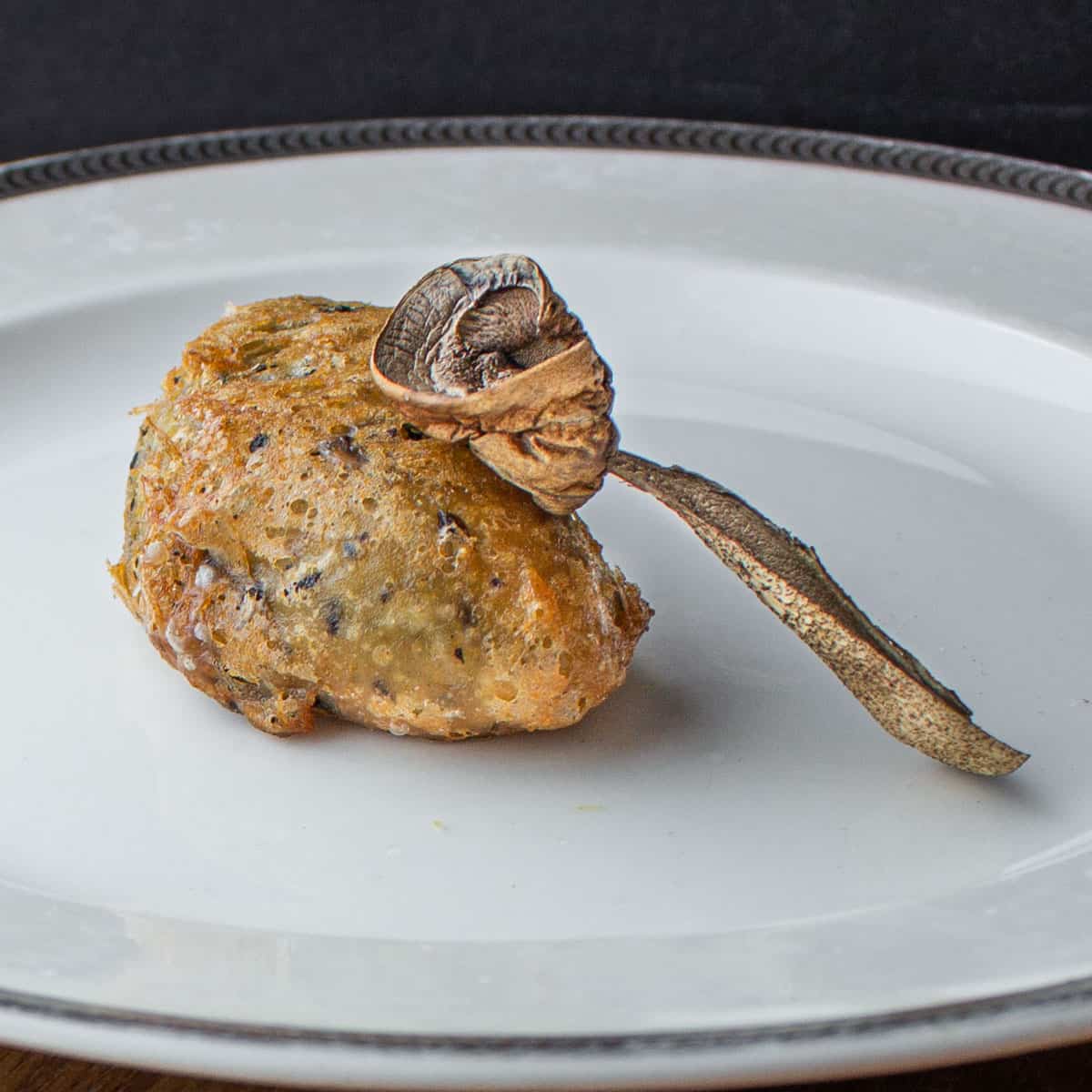
Scaber stalks, a.k.a Leccinum mushrooms have a reputation as being a bit underwhelming flavor-wise, which is half true.
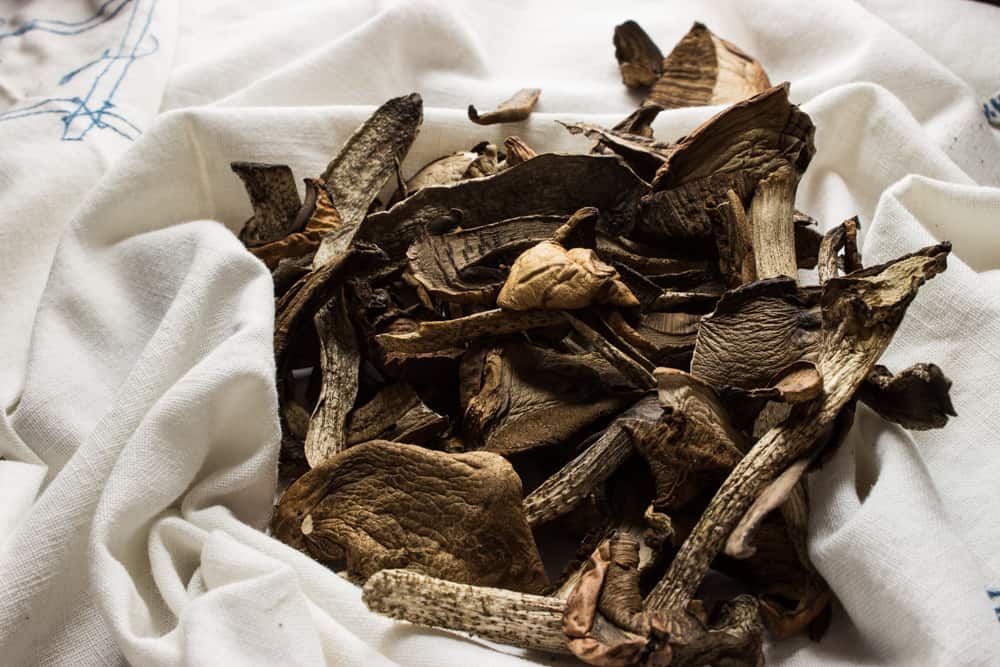
Cooked up fresh, they don't really have much going on, but after they dry, their flavor gets earthy, and rich.
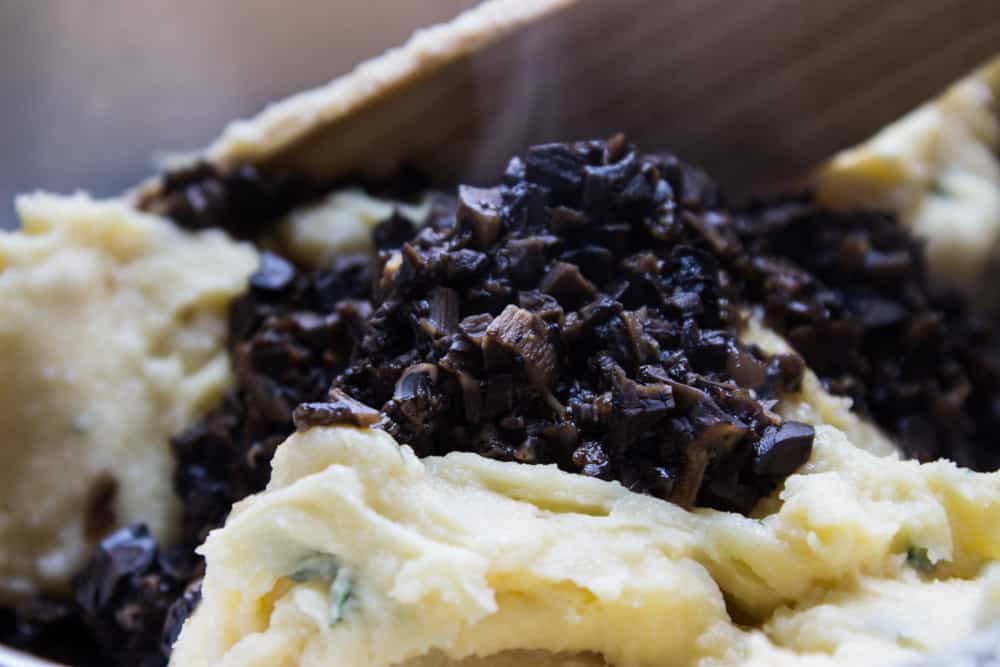
When you take into account the fact that some species of these can cause gastric upset when eaten fresh and under-cooked, you can understand why I dry these most of the time when I find them, since dehydrating has the magical effect of negating tummy problems.
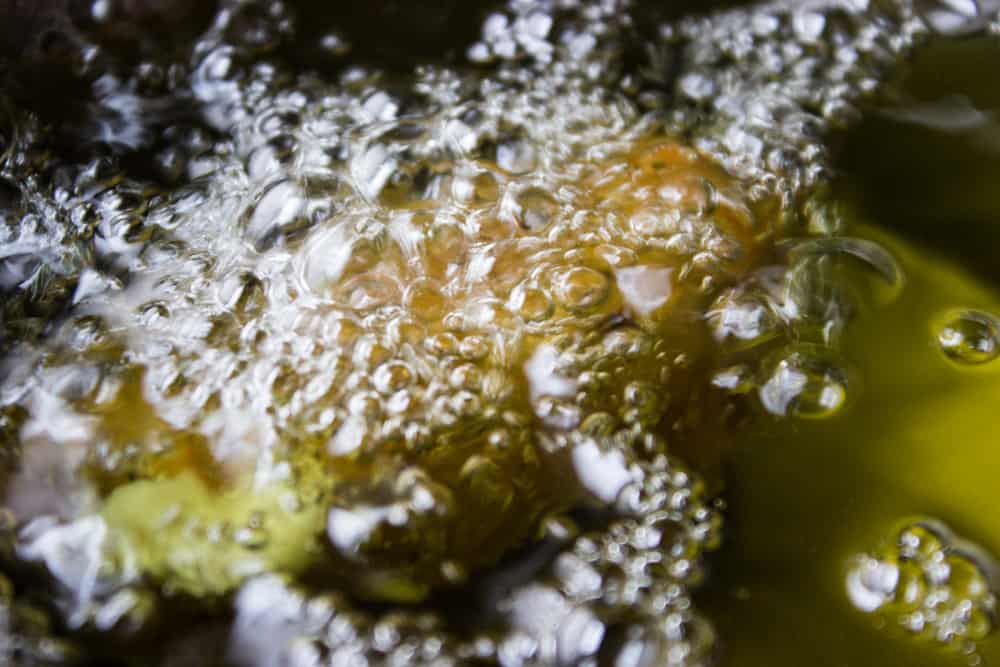
After dehydrating, you have to reconstitute the mushrooms to bring them back to life. Of course you can use them to make broth, or powder them but to concentrate their flavor I like to cook them down in their liquid with a little shallot, herbs, and booze to make a concentrated duxelles-a classic technique of preserving almost any mushroom, and one I use religiously at the restaurant.
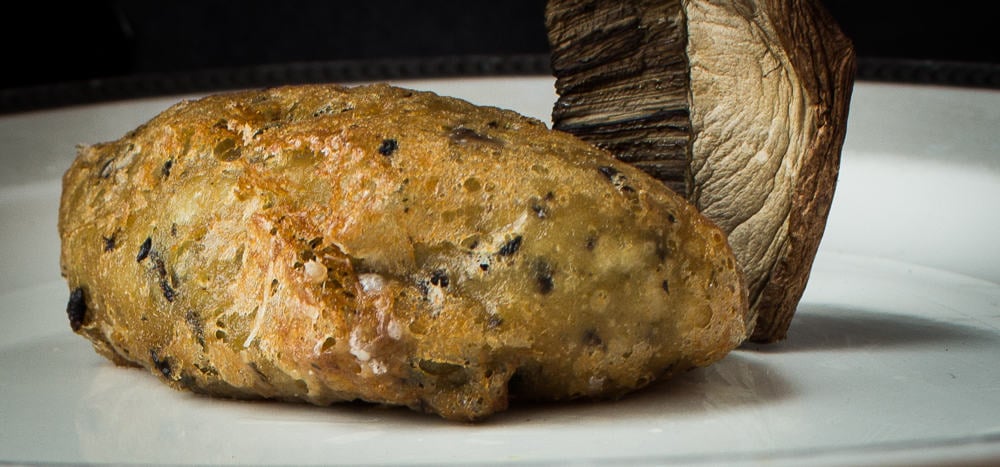
Scaber Stalk Fritters
Equipment
- 1 3 quart pot for deep frying
Ingredients
- 1 cup flour
- ¾ stick of butter 6 tablespoons
- 1 cup chicken stock preferably homemade (you can sub water or vegetable stock too)
- 4 large eggs not extra large or they will have too much water
- ¾ cup shredded gruyere or swiss style cheese
- ½ cup mushroom duxelles or more if you like it really mushroomy basic recipe here
- Kosher salt and pepper to taste
- Frying oil as needed, ½ gallon or so would be fine
Instructions
- Heat the chicken stock and butter in a small sauce pot, when it comes to a boil, add the flour all at once, reduce the heat to medium-low, and stir the mixture until it's sticky and forms a large lump of dough.
- Continue cooking the dough, stirring occasionally for another 4-5 minutes to make sure the water has evaporated. The dough needs to be a tight mass, the recipe won't work if it is too loose. Keep a close eye on it so the bottom of the pan doesn't burn.
- Remove the dough to the bowl of a stand mixer and allow it to cool for a few minutes, then on low speed, mix in the mushroom duxelles, cheese, and add the eggs one at a time, making sure the previous egg is incorporated before adding the next one.
- Taste a bit of the dough, and adjust the seasoning if needed. You could also mix this in a bowl with a wooden spoon and some serious elbow grease.
- Heat the oven to a warm/holding temperature. Meanwhile, heat the oil to 350 degrees in a deep, wide pan, like a cast iron skillet. Test the oil by dropping in a little of the batter to make sure it bubbles and sizzles nicely. Keep the heat at about medium. Using two spoons, form egg shapes of the batter and drop them into the oil.
- Cook the fritters until golden brown and cooked throughout, then remove them to the oven to keep warm while you fry the rest of the batter. Additional batter can be refrigerated for 1 day, but no longer as it breaks down and won't fry correctly.

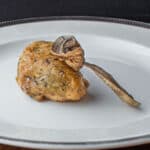
Jacqui
Hi Alan,
any reason I couldn't bake these? Instead of poaching or deep frying?
They look like a Gougère with some duxelles tossed into the mix, and we bake gougères.
I just duxelled up a mess of scabers plus a few of what we call False Chanterelles, Hygrophoropsis aurantiaca. I know some folks consider these poisonous but we've been eating them for years to no ill effect (yet).
I was thinking of making mushroom puffs, as in pâte à choux stuffed with duxelles, because they are a bit lighter and more elegant than pierogies, but then I saw your recipe and thought I could skip the whole stuffing thing.
But perhaps this is too humid to bake up well?? Am trying to figure our why you don't suggest piping this onto a baking sheet as an alternative. Of course I could try with a few and see what happens, then poach the rest if it's a disaster.
Jacqui
Hi Alan,
any reason I couldn't bake these? Instead of poaching or deep frying?
They look like a Gougère with some duxelles tossed into the mix, and we bake gougères.
I just duxelled up a mess of scabers plus a few of what we call False Chanterelles, Hygrophoropsis aurantiaca. I know some folks consider these poisonous but we've been eating them for years to no ill effect (yet).
I was thinking of making mushroom puffs, as in pâte à choux stuffed with duxelles, because they are a bit lighter and more elegant than pierogies, but then I saw your recipe and thought I could skip the whole stuffing think.
But perhaps this is too humid to bake up well?? Am trying to figure our why you don't suggest piping this onto a baking sheet as an alternative. Of course I could try with a few and see what happens, then poach the rest if it's a disaster.
Liz Terrance
I love everything you've posted, but this really looks phenomenal!
I really appreciate all the tips on scabber stalks. I was avoiding using them because I have a sensitive tummy to mushrooms, plus I heard they weren't all that great shakes. But with your advice on drying them, I think I'll give them a shot next time I find them!
Alan Bergo
Hi Liz, yeah I haven't ever had problems with any species of Scaber as long as they're dried. Happy hunting to you.